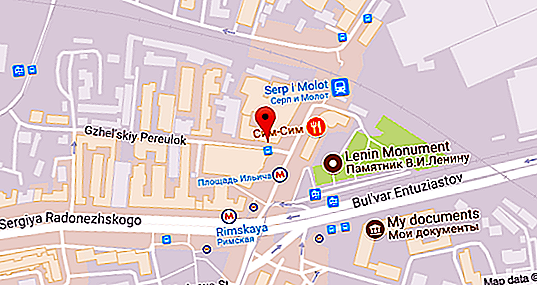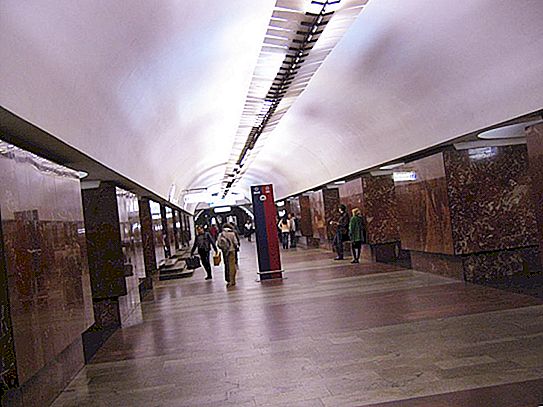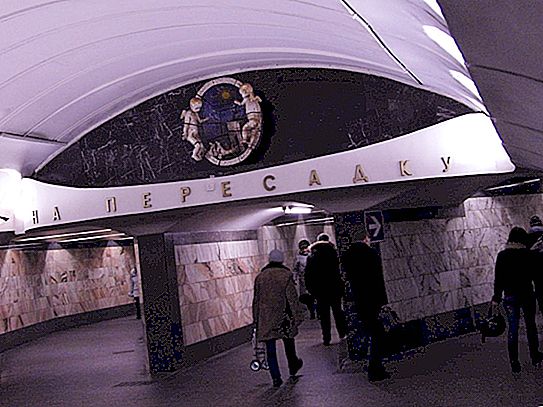Moscow Square Rogozhskaya Zastava has changed its name more than once during its existence. Now it is located almost in the city center, in the Tagansky district, and once it was a suburb. There are many interesting stories associated with this place. The metro stations Rimskaya and Ilyich Square are located on the square.

History of the square
In the 16th century, coachmen engaged in the delivery of mail and passengers began to settle on the left bank of the Yauza River. They carried goods to the village of Rogozhsky Yam (later the city of Bogorodsk, now Noginsk). Pits called postal stations, which were located at a distance of 60-70 km (approximately daily mileage of horses). In the XVIII century, after the creation of the Kamer-Kollezhsky shaft, one of the 16 outposts on the border of Moscow was located there. Initially, goods imported into Moscow were checked at the outposts and a duty was collected. Then the duties were canceled, and the outposts served only for police control. Rogozhskaya outpost flourished and grew rich. The outpost began to be actively occupied, houses were being built, shops and workshops were opened, a market was formed.
Old Believers
Families of the Old Believers settled in the settlement separated by the Yauza River from the 17th century. Many merchants who profess this faith have settled here. At the Rogozhsky cemetery was the center of the community. In 1825, there were about 68 thousand parishioners. The settlement differed from the rest of Moscow in a special patriarchal way of life. It was difficult for strangers to find a place there. During the plague epidemic in 1771, Old Believers organized plague barracks for the sick with their own money. Subsequently, an almshouse appeared for the elderly, shelters, educational institutions. At the beginning of the XX century. More than 700 old people lived in the almshouse. The Old Believer Institute existed in the settlement. Training there lasted 6 years. Merchants Morozovs, Ryabushinsky, Soldatenkovs who did a lot for Russia are buried at the Rogozhsky cemetery.
In 1845, not far from the settlement, the Guzhon plant was launched, which later turned into the industrial giant Hammer and Sickle. "Wine warehouse No. 1" appeared there, which turned into a factory "Crystal"
With the construction of the Nizhny Novgorod railway, access for newcomers to the settlement was opened, and a special way of life ceased to exist. Yamskoy fishing also fell into decay.
Vladimirka
From the Rogozh outpost begins the Vladimirsky tract. From there, prisoners went to Siberia to hard labor. Under the ringing of chains, half-cut-off convicts rushed for alms, which the compassionate residents threw. Dressed in gray pea jackets, with a tambourine ace on their backs in the head of the column were those who went to hard labor. They were followed by those who did not have documents. They were expelled from Moscow to the outback. At the end of the stage, the carts with relatives, wives and children moved. From 1761 to 1782 about 60 thousand people went through the stage. During the time of Nicholas I, up to 8 thousand prisoners a year passed through Vladimirka. The Vladimirsky tract was called the road of sorrow. It is hard to imagine what those who called this road "Enthusiast Highway" were thinking about.
Area in the 20th century
In 1919, the Rogozhskaya Sennaya Square was renamed to Ilyich Square, and the Rogozhskaya Zastava in 1923 began to be called the Ilyich Outpost, in honor of Vladimir Ilyich Lenin. In 1994, the square was returned to its old historical name. The area has partially preserved merchant buildings of the late XIX century. In 1816, Alexander the First ordered that houses in Moscow be painted with "more delicate and better colors." Colors have been identified for painting the facades home. Modern architects took advantage of the emperor’s order and painted the lovely two-story houses in original colors.
Metro station "Ilyich Square"
The station has existed since 1979. It is a deep-laying station, a pylon, has three arches and one platform. Eight pylons are faced with red Salieti stone, and socles with Labradorite. The floor in the aisle is covered with black Gabro, and the platform walls are finished with white Koelga stone. The station is illuminated by fluorescent lamps forming a strip. Between the pylons the lamps are located in the caissons. Authors-architects of the station are Klokov, Popov, Petukhova. Sculpture V.I. Lenin was performed by the sculptor Tomsky. In the center of the lobby is the passage to the Rimskaya station. Through the underpass, you can go to the Rogozhskaya Zastava square, to the Hammer and Sickle platform, on the Enthusiasts highway. The stations "Rimskaya", "Ilyich Square", the platform "Hammer and Sickle" form a large transport hub.

The construction of the station was difficult. Due to geological features, it was necessary to reduce the diameter of the tunnel. During the construction process, an underground lake was affected and the tunnels flooded. A complex engineering operation was carried out, as a result of which 65, 000 m 3 of water was poured into the Moscow River. But despite this, the station was commissioned on time.

Area in literature
In literature, this place of Moscow is found more than once or twice. Protopop Avvakum in his letters tells how he crossed the Rogozh outpost. Nikolai Svechin, a popular author of retrodetectives, describes the life and customs of the Old Believer community in the book "Testament of Archpriest Avvakum." Vladimir Gilyarovsky in his book "Moscow and Muscovites" tells in detail about the Rogozh outpost and the sufferers who walked along the stage.
From childhood, everyone remembers the famous Uncle Stepa. He lived Sergey Mikhalkov settled a charming hero:
there’s one fraction in the house, at Ilyich’s Outpost …






